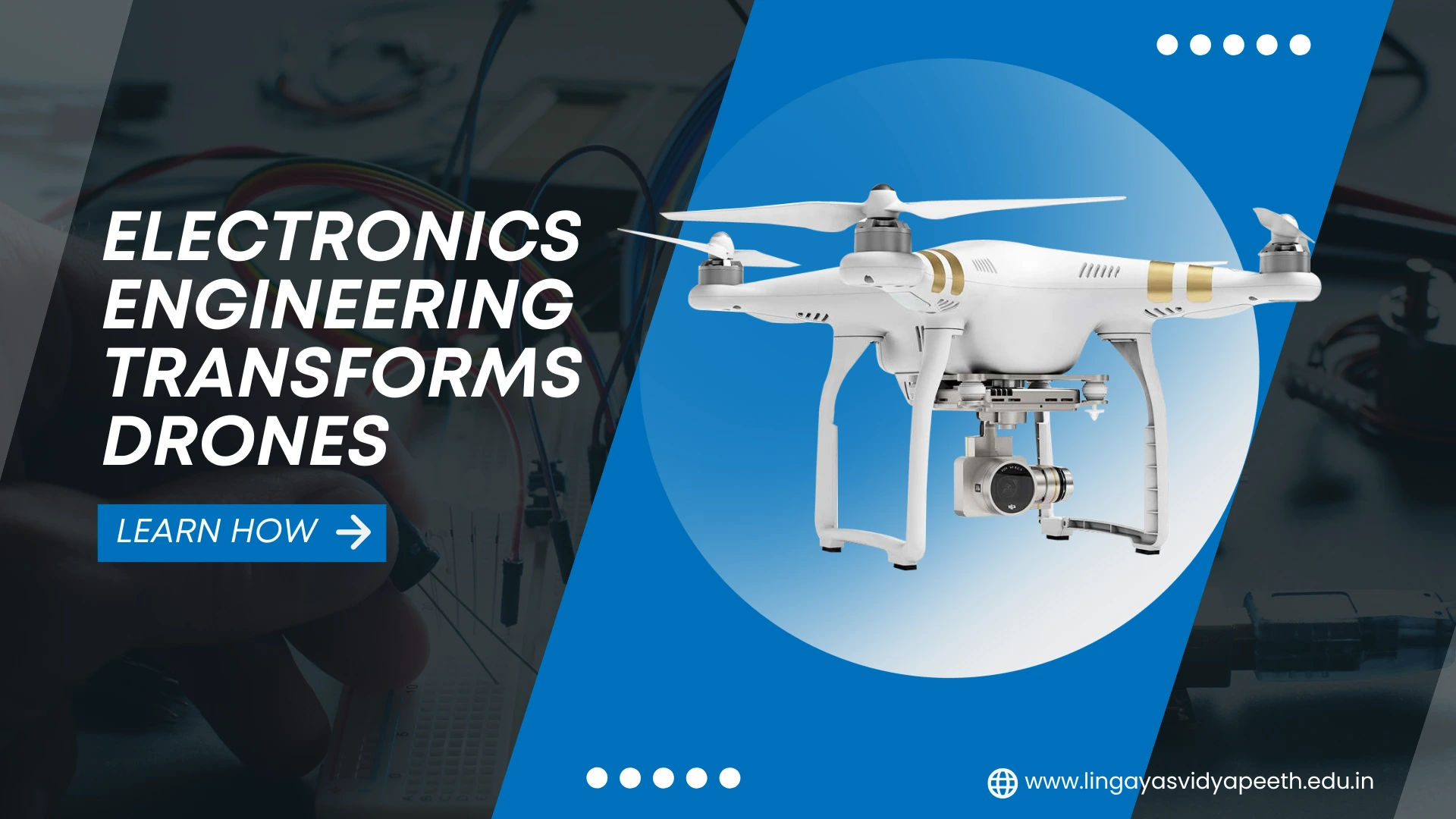Home » How Has Electronics Engineering Revolutionized the Drone Technology?

Drones, or unmanned aerial vehicles (UAVs), have quickly evolved from mere toys to vital tools across different industries. From aerial photography and surveillance to package delivery and disaster response, drones have proven their versatility and potential. Behind the scenes, the complex interplay between drones and electronics communication engineering plays a crucial role in their capabilities and applications.
The Electronics Backbone of Drones
Drones depend heavily on electronics communication technologies to operate effectively. Some of the key components and their roles are as follows:
Li-Fi Technology – The Revolutionary Wi-Fi
Electronics Communication Challenges and Solutions
While electronics communication technologies have significantly advanced drone capabilities, there are still challenges to overcome:
Uses of Drones in Electronics Communication Engineering
Drones have become essential tools in various fields of electronics communication engineering:
Conclusion
The synergy between drones and electronics communication engineering has opened up new possibilities and applications across various industries. As electronics communication technologies continue to advance, we can expect even more innovative and sophisticated drone systems to emerge. By addressing the challenges and using the advancements in electronics communication, we can unlock the full potential of drones to benefit our society.
Are you passionate about diving deep into the field of electronics and communication and have a bright career? Choose Lingaya’s Vidyapeeth for pursuing a BTech in ECE, being the best engineering university in Delhi NCR, with dynamic curriculum, state of the art infrastructure, expert faculty and industry connections, it makes you future ready and helps to propel your career to new heights.
From
Dr. Namrata Bansal
Assistant Professor
Lingaya’s Vidyapeeth
Electronic Engineering Colleges in Delhi NCR
RECENT POSTS
CATEGORIES
TAGS
Agriculture Agriculture future AI Architecture artificial intelligence BA English BA Psychology BTech Engineering Business management career Career-Specific Education career guide Career Opportunities career option career scope Civil engineering commerce and management Computer Science Computer science engineering Data science degree education Engineering engineering college Engineering students English Literature english program Exam tips Fashion Design Fashion design course Higher Education Journalism journalism and mass communication law Law career Machine Learning MA Psychology Master degree mathematics MBA Mechanical Engineering Pharmacy Psychology Research and Development students
University Address: Nachauli, Jasana Road, Faridabad, Haryana
Toll Free: 1800-120-4613
Mobile : 8447744303 | 8447744304 | 8447744306 | 8447744309
Address: C-72, Second Floor, Shivalik, Near Malviya Nagar,
Above HDFC Bank, New Delhi 110017
Ph.No. - 011-46570515 / 45138169 / 41755703 / +91-7303152412
Jagmani Kutir, Ground Floor, Road No-1, Rajeev Nagar,
Near Darbar Marriage Hall, Patna-800024, Bihar
Contact No: 9818352069/8130120095
Mail: [email protected]
Copyrights © 1998 - 2025 Lingaya's Vidyapeeth (Deemed To Be University). All rights reserved.
It is important to note that the following email IDs and domains are fraudulent and do not belong to our university.
LV only conducts physical/online verification of any document related to examination on the following email id: